Genre: Slasher
Premise: In the cutthroat world of K-POP, a group’s debut is threatened when someone begins to violently attack its members.
About: This script finished on last year’s Black List. The writer, Lynn Q. Yu, came up with the idea during the pandemic when she went down the K-pop rabbit hole after watching Netflix’s documentary about Blackpink (Light Up the Sky). “That was my first time sort of learning about the trainee camp system, and how insanely competitive it is.” The script almost sold before the strike. “Going into late April, we actually had four parties that were very interested in it. At the end of April, we got a studio to offer money. But ultimately, they low-balled us. We had to walk away from the deal because it was right before the strike. I remember negotiating on April 28 and the strike started on May 1. They were basically trying to buy me out for a very low price, hoping I would accept the floor right before the strike.” You can read more about the writer and Unnie over at Joysauce.
Writer: Lynn Q. Yu
Details: 106 pages

Sometimes I wonder why every script isn’t about K-Pop.
Don’t you?
Okay not really but…
One of the big challenges in screenwriting is the decision you have to make at the concept stage. You can write something more personal that resonates with you and, therefore, will be more enjoyable to write. Or you can write something that is more saleable, a juicier more marketable concept. Unfortunately, those are harder to write since you don’t care about them as much.
There are a few blessed screenwriters out there whose passions align with what’s marketable. So, for them, it’s easier. There is another option, though. Try to find the heart in the marketable idea – something you resonate with – and use that to guide your script. That way, you’re incorporating the best of both worlds. That’s what happened with Lynn Q. Yu here.
“I had hit a moment in my career, where I felt I had hit a wall. I was questioning whether I was good enough, whether I was talented enough. I wanted to write a story where a protagonist was really struggling with their own talent and adequacy. What if the reason they failed wasn’t because of the system? But because someone younger and hotter and more talented came up and supplanted them, which is something that I think most creatives have to deal with and have to go through. I combined those themes, but set them in this K-pop world.”
26 year-old Hoyeon Cho is known in her group as “Unnie,” which means “older sister” in Korean. In this case, it might as well be a racial slur. Nobody wants to be called older anything in the youth obsessed world of K-Pop. Unnie is part of a 7 person group of K-Pop members who are trying out to make the final group, which will consist of only 4 of them.
The other members are 22 year old butch Jae, wisp thin 20 year old, Raya, religious 20 year old, Nari, loud 21 year old Hana, spoiled rich 18 year old Min-Ji, and 20 year old adventurous Chaeyoung.
When Chaeyoung is attacked in Koreatown (in LA) and beaten into a coma by a young woman dressed in a pixie K-Pop costume, a new girl, 19 year old Sara, comes in. Sara is super-odd and spends a lot of her time staring at people while saying nothing. Creeeeepy.
Unnie is suspicious of Sara right away and begins watching her every move. With only 2 weeks left before the final four are chosen, she’s not leaving anything to chance. On the second night Sara is there, Raya is beaten to death in the tool shed outside the house they’re all staying at.
Next thing you know, Sara is seducing Jae, who’s more than happy that this hot young whippersnapper is into her. It appears that Sara is manipulating everything, pulling the strings to ensure that she makes the group. Meanwhile, Unnie battles with their overbearing manager, Grace, who also happens to be her older sister.
Just when Unnie thinks she has the smoking gun to take Sara down, she realizes that the real disruptor may be closer to home.
There comes this moment in every script I read where I know that this is going to be a script of value or a script I’ll forget as soon as I finish. It typically comes within the first 40 pages. Usually earlier but it has happened later.
It amounts to a featured scene where something of significance happens. In this script, it happened around page 40 when the group was practicing their dance moves. Sara is new to the group and has, so far, been told to watch and pick up what she can.
But the manager decides to throw her into the mix. “Get in there and do your best.” In that moment, I thought to myself, “If Sara goes in there and is perfect and better than everyone else, this is going to be the type of script I forget as soon as it’s over. But if, instead, something unexpected happens, I’m probably going to like this script.”
So, what happened?
Sara went in and was perfect. I knew then the script wasn’t going to clear my, admittedly, high bar.
To be clear, I’m not saying the script is bad. I actually thought the script was fine. But there are SO MANY FINE SCRIPTS IN HOLLYWOOD. There are maybe 500 fine scripts. 1000 possibly. Maybe as many as 5000. In order to write a script that resonates with people, you must aim for above fine. WAY above fine.
And even though there’s no singular way to achieve this, one of the things you definitely want to do is place yourself in the reader’s mind while you’re writing and check in with that mind to see what they’re expecting. Once you know what they’re expecting, you can play with that. You can sometimes give them exactly what they’re expecting. But, at key moments, you should probably use what they’re expecting against them.
I knew as soon as Sara went in there and was perfect how this script was going to play out. It was a leverage moment in the script where the writer, whether they knew it or not, was telegraphing to the reader what kind of creative choices they were going to make. In this case, safe expected choices.
If Sara had screwed up or was lost or buckled under the pressure or was laughably bad, I would’ve had no idea where this script was going. And that’s where I want to be.
I remember reading the screenplay for Black Swan before it came out — another high pressure young dancer movie – and there was this scene where the main character has sex with her rival one night. I didn’t know what was coming next. Those are the kinds of choices that elevate a read.
I *do* think this script is marketable. It feels a bit like Smile 2, which looks good and will probably make a lot of money. But it doesn’t do anything that gets you excited. It plays out like you think it will. There’s a late script reveal where we learn who the killer is and it surprised me. But because the lead up to that reveal was by-the-numbers, it didn’t move the needle. You have to try and move the needle with your script. Even if you don’t succeed, you need to try.
This, like a K-Pop group, felt too safe.
[ ] What the hell did I just read?
[x] wasn’t for me
[ ] worth the read
[ ] impressive
[ ] genius
What I learned: In these ensemble scripts ESPECIALLY, where you have seven girls around the same age in a lot of scenes together, you must spend your script prep differentiating how they speak so that we can pick up who’s talking just by the dialogue alone. If they’re all using the same vocabulary, the same subject matter, the same slang, the same rhythm, the same number of lines every time they speak, we won’t be able to differentiate them. So take that extra time and try and separate each of them through their dialogue alone. That’s REALLY going to improve the read.

I know some of you are going to be upset with me that I’m not reviewing Megalopolis. But look. The one thing I can’t stand is purposeful disregard for screenwriting. When they, the writer, believe they’re so above the fold, that they can disregard all convention and write whatever the heck comes to mind.
Who sets up a character’s ability to stop time and then just… never pays it off? I’ll tell you who. Francis Ford Coppola.
I’ve read the screenplay. Years ago. There was more pretension in that script than a West Hollywood farmer’s market. And it looks like Coppola hasn’t changed anything from that draft. Why does this matter? Because I read 25 scripts like Megalopolis a year. Big operatic pieces of bloat with a million ideas and nothing to guide them. These screenplays are born out of writers who have imprisoned their inner editor. Whatever they think of, it goes in the script. AND IT NEVER COMES OUT.
Which is Megalopolis to a T.
It is not art.
It’s laziness.
Ego-driven writers believe they’re creating the former because they’re following their writing soul. But when you don’t identify the suckiness in your script and taking the time to get rid of it, you’re just lazy.
The craft of screenwriting is built on improvement. It is about taking your ideas and using each new draft to improve them, reorganize them, elevate them! Which is actually fun. I love improving stuff. Finding a more interesting way into a character. Coming up with a better set-piece. Identifying some form of conflict that turns a boring conversation into an exciting one.
Coppola is not interested in that. He’s using the George Lucas Phantom Menace method of screenwriting – one-draft-and-done. And then he wonders why his movie only made 5 million dollars on opening weekend.
It’s because when people see the trailer, THEY DON’T KNOW WHAT THE MOVIE IS ABOUT. If people don’t understand what they’re going to see, they don’t go. Period. It’s one of the things good screenwriters think about when they put a script together: Is this premise clear? Will it be clear in logline form? Will it be clear when I pitch it to someone? Will it be clear as a trailer?
Think about that. If someone asked you to pitch your movie right this second, would it be quick and easy to do so? Or would you talk for five minutes and stumble all over yourself trying to explain it?
Because when I look at Megalopolis, I don’t see an elevator pitch. I see a space-elevator pitch.
Consider this a plea to screenwriters everywhere: Come up with clear concise ideas that have clear concise executions. The more complex the nature of your story, of your narrative, of your plot, of your structure, the more time you’re going to have to put into the script to get it right. More drafts. More feedback. More reshuffling your ideas of what the movie is. It can be done. But you need a legion of people helping out. You’d think Coppola would’ve been smart enough to do that but I get the impression he didn’t call a single fancy friend of his for feedback.
Okay, let’s move onto Wolfs, one of the oddest movies you’ll see all year.

What I like about Wolfs is that it’s the kind of movie Hollywood used to make – a movie star movie. Every frame of this film is dependent on movie star faces being on screen. Because if you took those movie star faces off for even a second, this would fall apart real fast.
It’s still cool to see though. This is the type of movie that would’ve done gangbusters at the box office in 2002. So it does feel a bit odd to watch it on streaming. You feel like these guys deserve more, even if Apple paid every above-the-line talent member 500 million dollars so they could have this exclusively on their channel.
And you know what, for a good 30 minutes there, this was more than just a movie-star movie. It was a fun little contained screenplay about two fixers who get called to the same job. If you haven’t seen the film, Amy Ryan, who’s the district attorney, hires a male prostitute and brings him up to her hotel room where he begins horsing around and accidentally falls onto a glass table and dies.
She calls a fixer, George Clooney. But as soon as he starts cleaning up, Brad Pitt arrives. He’s been called by the hotel manager, who has cameras in the rooms and saw the whole thing. The two then have to clean up this mess, George for Amy Ryan and Brad for the hotel. But due to the intricate nature of everything, they both have to work together. Things then take a turn for the crazy when they find out the prostitute had blocks of heroin on him and, oh yeah, he’s still alive.
I believe, at one point in time, that this entire screenplay took place in the hotel room because that’s the better story. Or, at least, the story that could play out in the more clever way. Once the kid comes back to life and they have to chase him all over the city, any chance at a clever fun screenplay was abandoned especially once you start throwing arbitrary Eastern European criminals into the mix (the Albanians and the Croatians).
Writer-Director Jon Watts makes a choice that, no matter what, George and Brad are going to be cool in EVERY SINGLE FRAME and while sometimes that works, there are other times where it flat-out stifles the scene. The two are SO not bothered when this kid runs across the city that I didn’t feel an ounce of worry that they wouldn’t catch him. That’s the whole point of the scene, to make the audience worried that he might get away. But if the actors (the characters) never worry for a second, why would I worry?
But then there are times where it worked! My favorite moment was when they had to crash a wedding and got pulled into the main wedding dance with all the men, in a circle, dancing wildly. The contrast between the Croatian’s dancing exuberance and George and Brad’s hang-dog looks while being pulled round in a circle was hilarious.
There were some missed opportunities in the script. The story got a little less exciting when we learned that the kid was just some random dude and not a prostitute. Because I would’ve loved to rope a prostitute in there and get Amy Ryan on board for more than the opening. But I know why they did it this way. They didn’t want three good-looking guys running around the city. Watts needed contrast. So he went with a dopey kid. Why would Amy Ryan bring a dopey aggressively unsexy kid to her room? She wouldn’t. Which is a plot hole you have to accept.
I think if this entire movie stayed in the hotel room (or at least the hotel), it would’ve been better. And if George and Brad’s energy raised up as the movie went along, to match the energy of what was happening, it would’ve been better. It’s still not a bad way to spend two hours and it’s a low-key Christmas movie if you need something for the family to watch (okay, maybe little Darla can’t watch). Overall, I say it’s worth checking out.
What I learned: Here’s a tip. I want every screenwriter to pick a night of the week. Any night is fine. Then, practice the pitch of your latest script out loud. Do one quick “logline” version. 10 second pitch. And then do one longer version where you fill in the details. A 1-2 minute pitch. Practice these once every week so that when someone asks you what you’re writing, you won’t stumble all over yourself telling them. Cause if you wait until the first moment someone asks you to pitch your script, I guarantee you it won’t sound any good.
Come one, come all, and vote for your favorite scene!
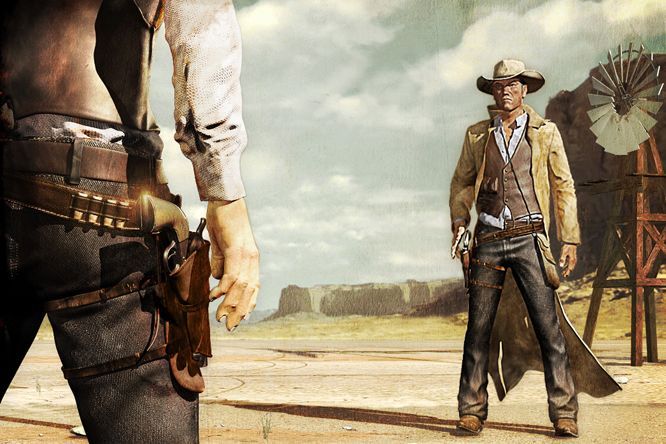
It’s HERRRRRREEEEEEEE!!!
Scene Showdown you wiley little fashionistas!
I had a lot of fun reading through all the entries. It taught me a lot. It’s clear now that some people know what a scene is and some don’t. It’s clear to me that some people understand the importance of entertaining during a scene and some don’t. We’ll talk about that more next week because I definitely think there are lessons to learn here.
A lot of people had solid scenes that didn’t quite make the cut. Brett Martin’s unique take on Jack The Ripper was fun. Finn Morgan’s mid-air attack on Air Force One was exciting. Nick Maiorano’s wife-strangling scene minutes before the family comes over for Christmas dinner almost made the cut. Colin O’Brien’s time-traveling kids scene flirted with the top 5. Ioannis Kementsetsidis wrote a fun scene about a reporter investigating an old lady in possession of a mysterious gemstone. Andréas Edelman wrote an inventive scene about what life is like in a world where the government has cracked down on laughter. And there were a few other good scenes as well!
But these were the top 5 scenes in my opinion. I’m going to post the first page of each. But you can read the entire scene by clicking on the links for each entry. After you’re finished, vote on your favorite scene in the comments section. Voting ends on Sunday, September 29th, at 11:59pm Pacific Time.
Good luck!
Title: The Factory
Genre: Thriller
Logline: A paranoid factory inspector touring the headquarters of a successful razor company on the verge of a sale is offered an exclusive glimpse of their newest – and most shocking – product yet.
Scene Setup: We open our feature on an exhausted father. Taking his daughter home on a nighttime train. What could go wrong?
Full Scene Link: The Factory
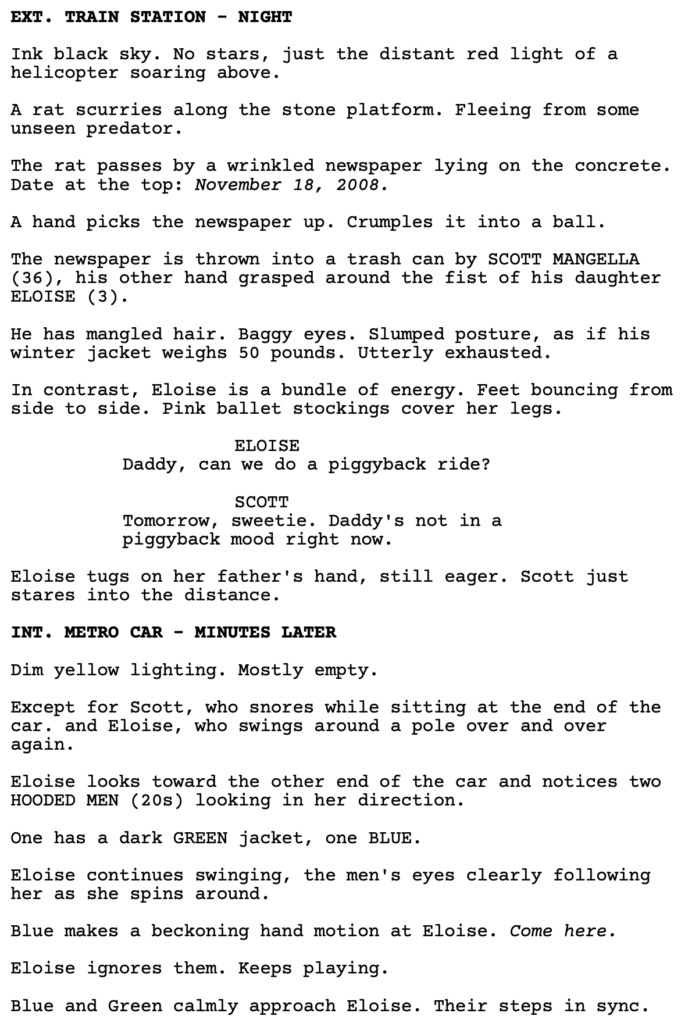
Title: Sign of the Times
Genre: Comedy, Coming-of-Age
Logline: An offbeat high school senior’s directionless life gets a bit more interesting when she grants an elusive first date with a boy who didn’t even ask her out.
Full Scene Link: Sign of the Times
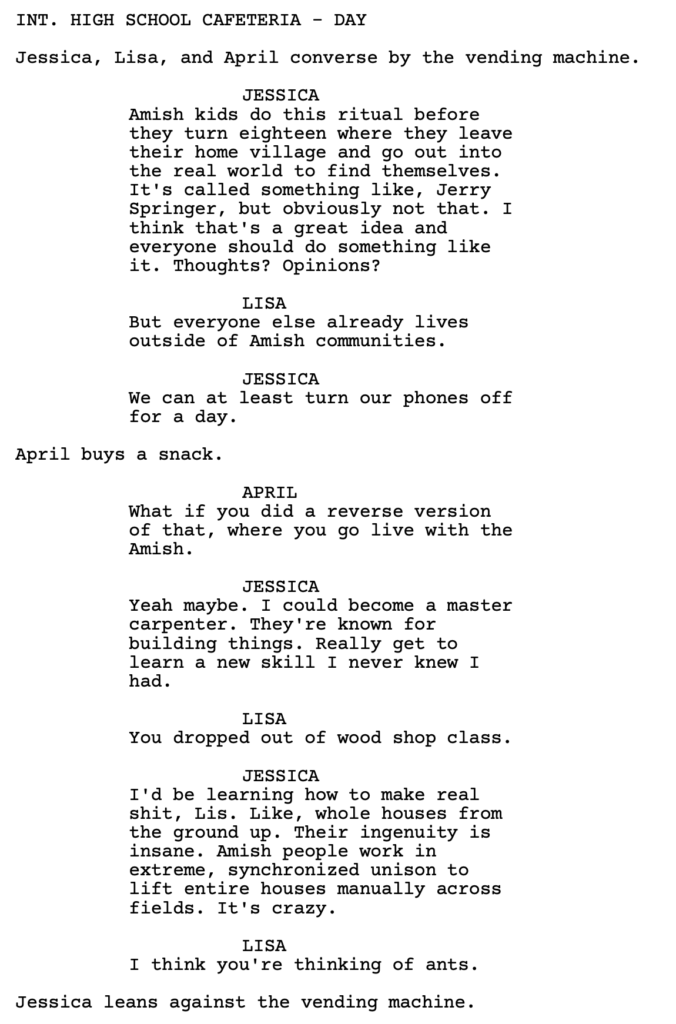
Title: Caught in the Open
Genre: Horror/Thriller
Logline: A cross-country road trip runs straight into some big trouble.
Scene Setup: Fleeing from an abusive relationship, BILLIE-MAY and her nine-year-old daughter, ELLIE, have just set out across country in a beat-up old Corolla. But their escape route takes them through an area that’s recently seen a number of murderous attacks by a pack of mysterious killer dogs…
Full Scene Link: Caught in the Open
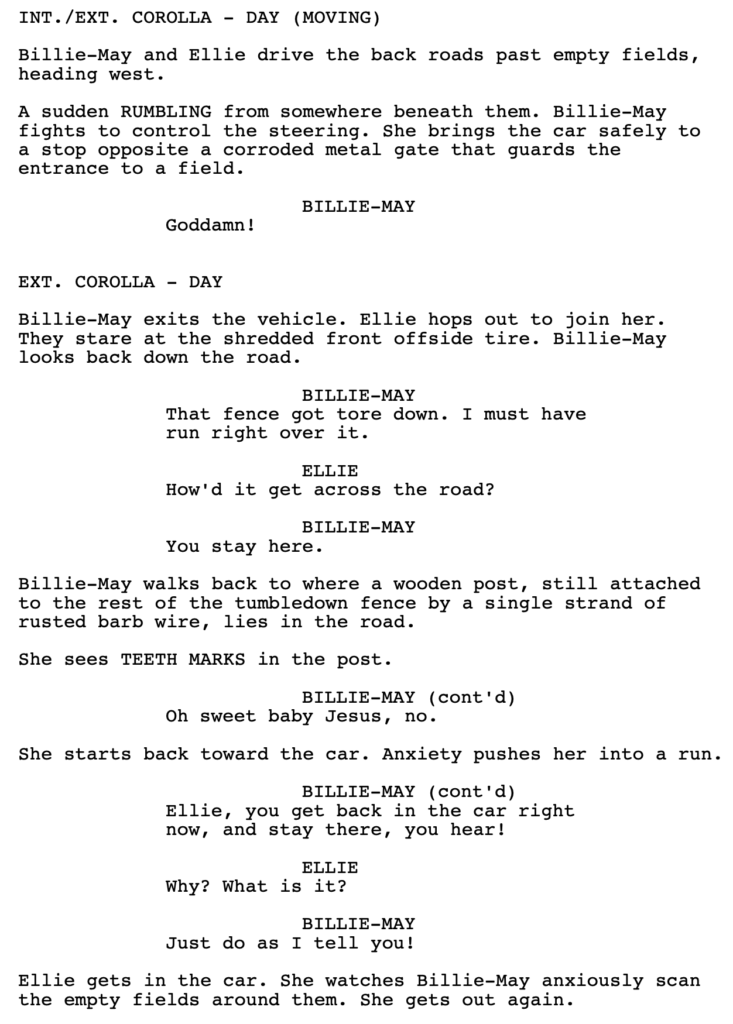
Title: ”Based on a True Story”
Genre: Comedy Feature
Logline: A struggling screenwriter recruits his writer friends to help him turn his fictional heist script into a True Story in the hopes it’ll make it more marketable.
Scene Setup: Our protagonist, Andrew, is trying to convince his writer friends to help him act out the events of his screenplay so he can claim it’s a true story, thereby making it much more marketable. He wants to use the money to save the bar he works at (and lives in).
Full Scene Link: Based on a True Story
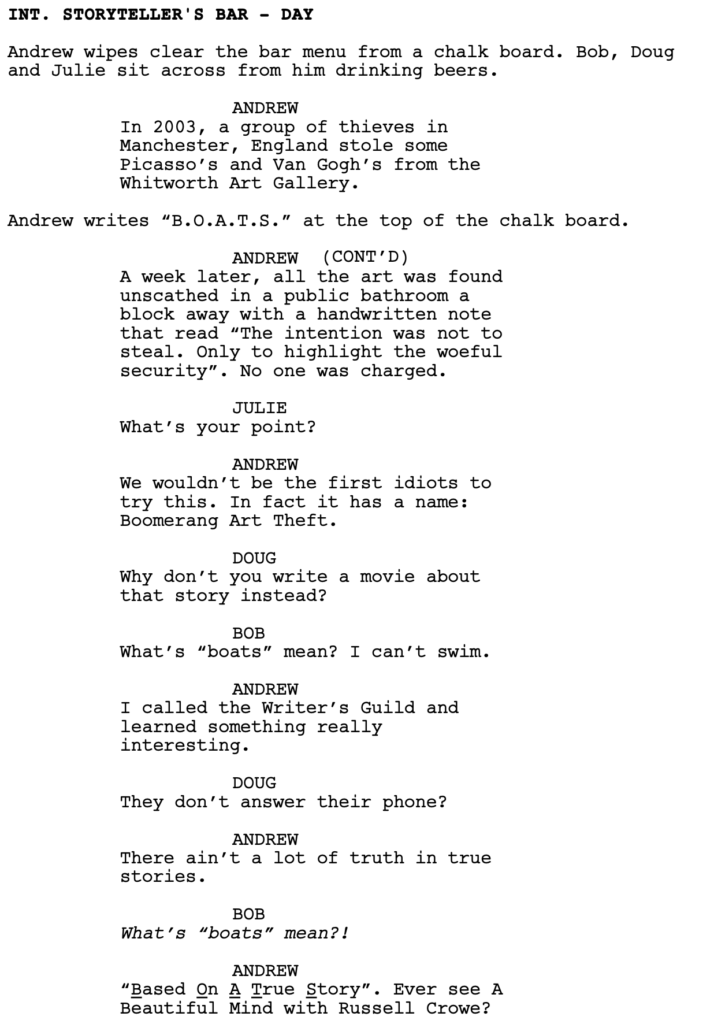
Title: American Sunshine
Genre: Drama, Crime, Period
Logline: In 1959 Palm Springs, a sleazy private eye teams up with a local Mexican teenager to find out who’s behind the murders happening in section 14, a square mile where all of the poor help live.
Scene Setup: Opening scene
Full Scene Link: American Sunshine
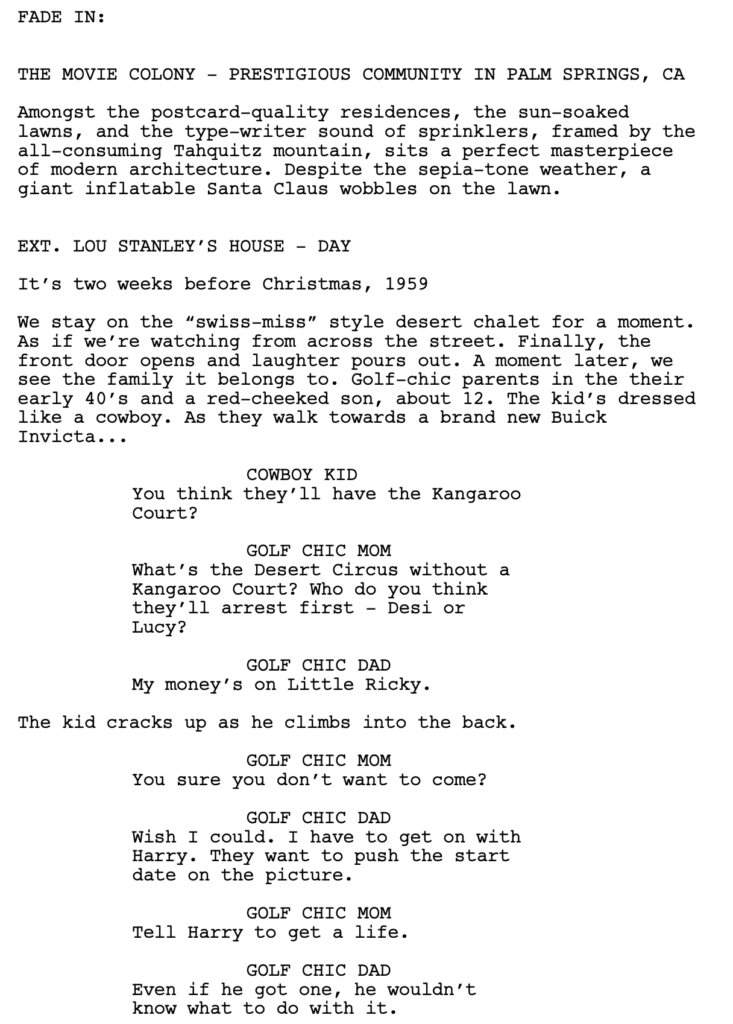
Today (Thursday) is the final day to send in a scene for Scene Showdown. Details are here!

You want to make it as a screenwriter.
You want to sell a script.
You want your script to be turned into a movie.
You want that movie to play in front of millions of people.
But you haven’t been able to fulfill that dream.
Why?
I don’t know.
But I guarantee you: You do.
Yes. The reason you haven’t gotten over the hump yet – you haven’t catapulted yourself into the arena of moviemaking – is 100% because of YOU.
It’s not because of nepotism. It’s not because of the color of your skin or your gender. It’s not because no one will read your script. It’s definitely not because they don’t understand your genius.
It’s you. You’re the problem.
But guess what?
That’s empowering. Because if you’re the problem, that means you possess the solution. You have control over fixing it.
Yet very few writers ever do fix it.
Because of that, they never achieve their dream. They never make it over the hump.
Why?
Because too many writers refuse to self-analyze and identify the REAL problem that’s holding them back. Only once you know what the problem is can you begin the process of fixing it.
Luckily, I’m here to tell you what your problem is. Or, at least, I’m here to provide you with the likely problem.
The sinister thing about “making it” is that we almost always self-sabotage. We get in our own way and prevent ourselves from achieving that which we so badly desire.
So, let’s go over the most common problems standing in the way of your success.
You’re Not Writing Enough
You say you’re a screenwriter. Yet you’re not writing enough. A screenwriter who’s really serious about success should be writing two screenplays a year with at least three drafts of each of those scripts. Or, writing one new script a year while putting the finishing touches on a screenplay from the previous year.
If you’re not doing that, the first question I’d ask you is, how serious are you!? Often, what screenwriters will do is keep fiddling away with one script without having any true destination for it.
This is a “Spinning Your Wheels” problem. You are often so afraid of being judged on the finished screenplay that you keep writing new drafts with no honest intention of ever completing the script. That way, you get to tell yourself you’re working AND you never have to get judged for that work. Perfect combination, right?
This is probably the hardest rock to climb out from under but the way out is clear. Start by setting times for yourself to write. I won’t force you into any time of day. You know what your schedule is like. But PICK. A. TIME. And, every day, write during that time.
From there, pick 2 screenplay contests you’re going to enter. Then, you must enter two scripts into those contests regardless of whether they’re “finished” or not. The idea for you is to get used to writing and get used to deadlines. Because if you can’t find consistency with those two basic things, you’ll never finish any scripts and you’ll never get anywhere.
You’re Not a Salesman
You’re quite good at keeping to a writing schedule. You DO finish your scripts. But then, once you finish, you have one or two people you send them to and if those people don’t flip out for how great your script is and tell you they’re sending it to Megan Ellison or Jason Blum, you tuck the script into a corner of your hard drive and never think about it again.
Your problem is that you do not understand the threshold that must be met in the selling phase of your screenplay. It’s not “Send the script to two people.” It’s not “Send the script to five people.” If you really want to have a chance at selling your script – I mean REALLY – you’ve got to send it to a ton of people.
10 at least. 20 is better. 30 would be awesome. 40 is a writer who’s serious. And 50 is someone who’s tried every avenue.
People say no in this town A LOT. They say no to writers with 20 credits. They’ll say no a lot more to writers with 0 credits. I just told you how Hollywood’s newest screenwriting crush, TJ Newman, was ignored by her first 40 inquiries until she got signed.
And if you’re wondering who to get your script to. ANYONE! Obviously, the closer they are to the business, the better. But contests count. People in the comments section count (well, maybe not Hep Athlete). Managers you cold e-mail count. I count. Every person who reads your script counts because that’s one more person who, if they like it, could push it up the ladder to someone else.
Be proud of your work. If you’ve put your heart and soul into a script, you deserve to have lots of people read it.
You Haven’t Done The Work
This issue pops up with two types of writers. The overeager writer writing his first, second, or third script, and the longtime writer who either never gets feedback or is unable to process feedback and improve the weak parts of his writing.
Each writer is dealing with opposing issues. The new writer doesn’t know what he doesn’t know yet. Every time they’re writing a page, they’re learning new things about the craft. So they can’t be blamed for not knowing why their scripts aren’t resonating.
The way to solve this problem is to assume there is a lot you do not know and to consider yourself an ongoing student of the craft. You are a work in progress and are okay with that. It does not mean you can’t get the attention of a major player with your third script or that you shouldn’t try. But you probably won’t and you shouldn’t get butt hurt if that’s the case. Thank them for their time and assume it’s because there is still more to learn. Get as much feedback as you can and keep getting better. Generally speaking, it isn’t until the 5th or 6th script that a screenwriter starts cooking with gas.
The longtime writer who is not getting better is a tougher fix. This issue often stems from stubbornness but can also be related to the fear that, if you admit to yourself that your writing approach is wrong, it means you have to “start over.” The idea of that is so terrifying that you’d rather stick to the path you’re on and keep charging forward with it. It’s the sunk cost fallacy.
These writers need to ask for more feedback and, when they get it, they need to process it. Particularly the specific feedback they hear multiple times. Once you know where your weakness is, you can create a little Google Search inspired lesson plan on how to fix it.
Common problems I see are boring characters, writing that lacks clarity, uninspired creative choices, plots that move too slowly, second acts that meander. Probably the biggest one is untested concepts that weren’t strong enough to build a screenplay around in the first place.
I remember a writer who kept getting the note that his scripts lacked conflict so what did he do? He came up with a concept that would automatically inject conflict into every single scene. It ended up being his best script!
There are tons of articles about all of these things on the internet. Just remember: Because there is no screenwriting college (for most of us), it’s up to you to create your own lesson plans.
Finally, be aware of how time stifles enthusiasm. That can be the biggest enemy of all. Of course you don’t have the same drive as you did when you first started and thought this was easy.
But guess what? You are a MUCH BETTER WRITER than when you first started. You’re probably better than the bottom 25% of working writers out there. Possibly even better than that.
Don’t let your diminished enthusiasm prevent that skillset from being seen by the world. Internalize that you’re better than you think you are. Cause I can promise 95% of writers on here that that’s the case. And then call on that younger version of yourself to provide any enthusiasm reserves they can offer to get your stuff out there.
Because, in the end, it all comes down to being seen.
A script cannot become a movie unless it is seen.
Your job then is, simply, to make sure people see it.
All that means is putting some effort into getting it in front of people.
You do that?
Your life may change.
Genre: Sci-Fi
Premise: In the year 2035, companies can help you control your dreams so you can have amazing dream experiences. But one of the dream “writers” learns that her company may be using the dreams to control the clients after they leave.
About: This script finished with 9 votes on last year’s Black List. From what I understand, co-writer Tricia Lee is a director. So she and her co-writer may be writing this for her to direct.
Writers: Tricia Lee and Corey Brown
Details: 104 pages
 Constance Wu for Jayden?
Constance Wu for Jayden?
Dreayuhyuhyuh dreams… dream dream dreeeeeeams.
Dreayuhyuhyuh dreams… dream dream dreeeeeeams.
For as long as there has been time, there have been screenplays about dreams.
And why not?
Dreams are mysterious. Dreams are elusive. Dreams are weeirrrrrd.
But dream movies rarely work. (What Dreams May Come, Vanilla Sky, The Cell, The Science of Sleep, Dreamgirls)
The reason dream stuff doesn’t work is because screenplay is STRUCTURE and dreams are ANTI-STRUCTURE. Often to the point of frustration. Case in point: Has anybody ever shared a dream with you that you actually enjoyed hearing about? Of course not. I don’t care if you were naked in high school and got eaten to death by a band of tiny land whales while your teeth fell out.
So, I go into this script skeptical.
But I am encouraged that the script has two writers. When you’re a lone writer, going into a loosely structured subject matter, you’re more likely to justify randomness and weak choices. In concepts like this that have the potential to go off the rails, it helps when you have a second voice to keep you in check.
Let’s see how that plays out…
30-something Jayden Chan works for a company called Dream Dynamics. She’s one of the dream writers there. Basically, you sign up, you come in, you give Dream Dynamics an idea of the dream you want to have, and the dream writer comes up with it in real time. They’re sort of like your Dream Operator, painting the dream as it happens.
But it’s imperative that the writer always retain 80/20% control of the dream. If the ratio ever dips below that (70/30, 60/40), then that’s REALLY BAD. Bad in what way, you ask? I wasn’t sure. That could’ve been made clearer. I just know that when Jayden’s dream control ratio went down to 70/30, everybody at Dream Dynamics freaked out.
A guy named Kato comes in for a session – KATO (37, Black) watches the intake video. Long braids, handsome as hell, a strong chest you just want to touch under his inauspicious gray sweater – whose dream ratio gets all the way down to 60/40, which nearly gets Jayden fired.
Later that night, Jayden is approached by her brother, Bing, who is a big protestor of Dream Dynamics. He thinks they’re evil. He lets Jayden in on something she didn’t know. That a handful of recent clients, all of them minorities, have died soon after their sessions!
After Kato nearly kills himself, Jayden realizes that something is not right. She suspects that the evil head of the corporation, Richard Fox, is using the dream technology to control the clients after they leave. This allows him to kill them off if need be.
Through a series of character interactions, we learn that this specific dream system is designed to “keep people of color down.” Richard Fox doesn’t want minorities to leave their dreams thinking they can also achieve those dreams in real life. So if they leave optimistic, he must kill them. Jayden teams up with her ragtag crew – basically Kato and Bing – to take down the evil corporation she works for and the nasty man who runs it.
Whenever you’re exploring a big topic like dreams, you need to find a *specific* way into the idea. Because the more you approach an idea from a 10,000 foot point-of-view, the blander the script is going to be. Ideas become more interesting the closer to them you get.
To expand on that, let’s take one of my favorite topics, aliens. Think about all the angles that have been explored through this topic. A kid finds an alien in his backyard and befriends him (E.T.). A family holes up in their farmhouse when aliens arrive on earth (Signs). A group of soldiers try and take out an alien that’s landed in the jungle (Predator). A linguistics professor attempts to communicate with aliens before the U.S.’s adversaries do (Arrival). A city resigns a bunch of aliens to a walled-off ghetto where they’re barely able to survive (District 9).
All of these are very specific ways to explore the topic. We’re not covering the grandiosity of Aliens with a capital A. We are looking at them from a highly specific point of view.
Getting back to dreams, the most successful dream movie is probably Inception and a big reason that worked was because of the specific genre Nolan told the story through. All dreams were explored as heists.
American Dreams is told through too broad of a lens in my opinion.
You’ve got this giant company. They’re helping people control their dreams. But really they’re using the dream control to control them after their dreams. I don’t know. It just feels too big to be interesting.
Granted, execution plays a big part in this. In a seasoned screenwriter’s hands, the execution of this story’s going to look a lot better. But, as constructed, it doesn’t feel like the idea has been explored with any sort of curiosity. Every first idea they came up with, they went with.
There’s some basic understanding of screenwriting structure. But the creative choices all feel cliched and predictable. It’s been a while since I’ve read a villain this one-dimensional. He’s mean because….. he’s mean! That’s the extent of his depth.
It’s kind of like watching my rookie quarterback on the Bears through three games. I’m hoping for him to dial up complex 70-yard passing plays for touchdowns. In the meantime, he’s barely able to successfully hand it off to his running back.
I want complex exciting storytelling here but the reality is, these writers are only barely able to execute character descriptions. I get it. We all start somewhere. But for this script to be on the Black List, I’ve got to think Franklin Leonard has transformed into Howard Hughes, randomly throwing darts at titles on the wall.
I would be interested to see what Chat GPT would come up with when given this same idea. Cause I suspect the script might be better than this. What Chat GPT does well is cliches and soft story choices. That describes American Dreams to a T. Cliches and soft story choices. It’s the polar opposite of yesterday’s film, The Substance, which had its own problems but a lack of bold choices was not one of them.
I mean, a good 30 pages of this script were dedicated to cutting to the good guys in a room saying, ‘We have to take down the meanie bad guys,’ then cutting to the bad guys in their room saying, ‘We must take down those good guys!’ It was like being transported back to 1984 watching an episode of The Smurfs. Just change the names “Papa Smurf” and “Gargamel” to “Jayden” and “Richard Fox.”
If you want to see a better version of what this script is trying to achieve with its social commentary, check out They Cloned Tyrone. While I didn’t love that script, it takes a lot more creative risks with both its storytelling and the way it explores this subject matter (white people exploiting people of color). Everything here felt rushed, first choice, with, I’m assuming, little to no critical pushback between drafts. Someone needed to challege this writing team with some hard-hitting notes for it to reach its potential.
[x] Gargamel
[ ] Azrael
[ ] Brainy Smurf
[ ] Papa Smurf
[ ] Smurfette
What I learned: I feel so confident the readers of Scriptshadow could’ve done better than this that I challenge everyone here to come up with a better way into this concept: A company that writes your dreams. I bet we get 4-5 ideas that are notably better than whatever this was. Share your ideas in the comments section.

